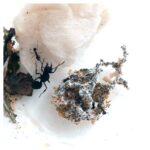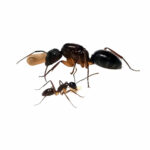

Camponotus mus
80,00€
Explore the exotic Camponotus mus, the renowned carpenter ant! Immerse yourself in the diversity of its colors and witness how it thrives in an artificial ant farm. Transform your ant farm into a captivating habitat where these ants showcase their amazing skills and natural beauty. A unique experience for any miniature life enthusiast! 🌿🐜
Data sheet of the Camponotus mus ant
Scientific Name: Camponotus mus
Common Name: Carpenter Ant
Taxonomic Classification:
- Kingdom: Animalia
- Phylum: Arthropoda
- Class: Insecta
- Order: Hymenoptera
- Family: Formicidae
- Genus: Camponotus
- Species: mus
Geographical Distribution: Carpenter ants of the genus Camponotus, including C. mus, are found in various regions around the world, primarily in tropical and subtropical areas. They can be found on all continents, encompassing a global distribution.
Habitat: Camponotus mus inhabits a variety of environments, from forests to urban areas. They are known to build nests in decaying wood, hence their common name “carpenter ant.” They can also establish colonies in the ground, under stones, or in other substrates.
Morphological Characteristics:
- Size: Workers can vary in size, but typically measure between 6 and 15 mm in length.
- Color: The color can vary, but they are typically black or dark brown, and in some cases with reddish tones, with the abdomen being golden yellow due to the abundant presence of hair.
- Body: They have a body divided into three distinct parts: head, thorax, and abdomen. The head is large compared to the rest of the body, with well-developed mandibles.
- Antennae: They have long and slender antennae, with a distinctive elbow shape in the middle.
- Wings: Queens and males have wings during the mating season, but workers are sterile and lack wings.
- Polymorphism: They exhibit size polymorphism, meaning that within a colony, there can be workers of different sizes.
Behavior:
- Diet: They are omnivores, feeding on a variety of sources, including dead insects, nectar, sap, and other organic materials.
- Communication: They use pheromones and tactile communication to coordinate activities within the colony.
- Nests: They build nests in decaying wood, excavating galleries and chambers where they rear their larvae and store food.
- Society: They are social insects that live in highly organized colonies, with a social structure that includes workers, males, and queens.
Interactions with the Environment:
- Positive Interactions: They can play an important role in the decomposition of wood and soil aeration in the forest.
| Options |
Queen |
|---|
Related products
Camponotus pseudolendus
Sold out
Camponotus lasiselene
Sold out
Polyrhachis armata
Sold out
Camponotus turkestanus
Sold out
Formica sanguinea
Sold out
Camponotus vanispinus
Sold out





















